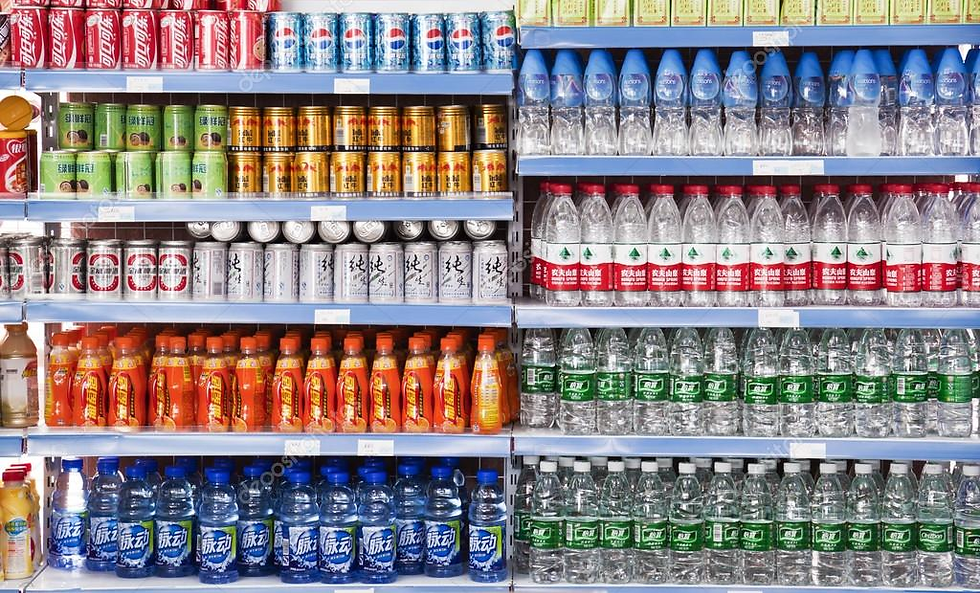Opportunities and Challenges for China SMEs in Vietnam
- Khôi Nguyễn Duy
- Oct 6
- 4 min read
Updated: Oct 22
China remains Vietnam’s largest trading partner, accounting for nearly 40% of Vietnam’s total import value in 2024 — equivalent to around USD 144 billion. Traditionally dominated by machinery and manufacturing inputs, Chinese exports to Vietnam have recently shifted toward consumer goods, food, and FMCG products — largely driven by small and medium enterprises (SMEs).
For China SMEs in Vietnam, this market is not just geographically close but also strategically vital — a “testbed” for regional expansion in Southeast Asia. Yet, proximity doesn’t guarantee simplicity. As Chinese products flood the Vietnamese market, SMEs face challenges in competition, regulation, and consumer perception that demand both agility and local understanding.

Investment Scale & Key Product Categories of China SMEs in Vietnam
According to Vietnam Customs data (2024–2025), imports of Chinese consumer and retail goods have grown at double-digit rates, particularly in FMCG, food, and beauty categories.
Prominent sectors include:
Food & agriculture: China accounted for nearly USD 1 billion in fruit and vegetable imports to Vietnam in 2024 (+25% YoY). Products like grapes, pears, red dates, and Mengzi plums are increasingly visible in supermarkets and wholesale markets.
FMCG & cosmetics: domestic Chinese brands such as Perfect Diary, Colorkey, and Focallure achieved tens of millions in online sales across Vietnam’s e-commerce platforms.
Homeware & fashion: plastic goods, kitchen items, and apparel from Guangzhou and Fujian continue to dominate the low-to-mid price segments.
The biggest strengths of Chinese SMEs are speed, scale, and price — allowing them to target multiple consumer segments simultaneously.

Three Main Entry Channels: Official, Grey, and Cross-Border E-commerce
Official import channel
The official (registered) route is best suited for long-term growth and brand building. Products are imported with full customs documents, Vietnamese labels, and safety certifications. Its advantages are legal stability and access to Modern Trade (MT). However, it involves higher compliance costs and longer processing times — especially for food, beverages, and cosmetics.
Grey channel (informal trade)
The grey channel is a hallmark of Chinese SMEs’ agility and remains a major component of cross-border trade between China and Vietnam.
Key routes: Lang Son, Mong Cai, Lao Cai, Cao Bang.
Advantages: low cost, fast customs clearance, minimal paperwork — ideal for SMEs without legal entities in Vietnam.
Disadvantages: high legal and quality risks, no access to MT or convenience store systems.
In practice, many SMEs adopt a two-step approach: they first test the market via grey imports for 3–6 months, and once demand proves strong, they switch to official importation to expand nationwide and legitimize their brand.
Typical categories in this channel include low-cost cosmetics, seasonal fruits, homeware, small electronics, and apparel.
Cross-border e-commerce
This is the fastest-growing entry channel for China SMEs in Vietnam.
Major platforms: Shopee, TikTok Shop, Lazada.
SMEs can sell directly to consumers without local distributors or warehouses.
In H1 2025, Chinese beauty brands accounted for over 50% of imported cosmetic sales on TikTok Shop, growing more than 140% YoY.
Advantages: minimal upfront cost, wide reach among Gen Z and Millennials, and strong virality through KOLs and livestreams.
Disadvantages: longer delivery time (5–7 days), higher return rates, and since 2025, cross-border parcels under VND 1 million are no longer tax-exempt, reducing price competitiveness.
Hybrid model (grey + e-commerce)
A growing number of SMEs are now using hybrid logistics models: goods are shipped from Guangxi to Lang Son (Vietnam border), temporarily stored in local warehouses, and then sold online under Vietnamese seller accounts.
This approach reduces logistics costs and customs delays while maintaining fast delivery times — but carries risks as Vietnam tightens origin-tracing and labeling requirements.

Key Consumer Markets
Hanoi and Ho Chi Minh City are the two largest consumption hubs for Chinese goods.
Hanoi: proximity to Lang Son border allows faster cross-border shipping.
Ho Chi Minh City: logistics infrastructure and Cat Lai Port make it ideal for nationwide distribution.
About 62% of digital consumers in these two cities purchase cross-border products at least once a week — showing how deeply China SMEs in Vietnam have penetrated local consumption habits.

Competition & Market Challenges
China SMEs in Vietnam face a three-layered competition:
Against local Vietnamese brands, which are improving in quality while staying price competitive.
Against Thai, Korean, and Japanese brands, which enjoy higher consumer trust.
Against each other, as hundreds of Chinese sellers engage in aggressive price wars, cutting margins to 5–8%.
Additional challenges include:
Legal compliance: labeling, registration, and safety testing for cosmetics and food products.
Rising logistics costs: delays at border gates and container prices up 20–30%.
Consumer trust: lingering perceptions of “cheap, low-quality Chinese goods.”
Localization gap: weak Vietnamese-language marketing and after-sales support.

Opportunities & Recommended Strategies for China SMEs in Vietnam
Geographical advantage: China’s proximity cuts logistics costs by 40–60% compared to other exporters.
FTA benefits (ACFTA, RCEP): reduced tariffs for officially imported goods.
Digital-driven demand: over 70% of Gen Z consumers in Vietnam are open to buying Chinese products if reviews are positive.
Recommended strategies:
Localize product and packaging (less spicy, Vietnamese labeling, localized design).
Combine online and offline: use e-commerce to test, then shift to official imports for long-term brand growth.
Invest in branding and customer service: collaborate with Vietnamese KOLs and create localized social media presence.
Compete on value, not price: focus on customer experience and reliability rather than discounts.
Vietnam is a fast-growing, accessible, and high-potential market, where Chinese SMEs can scale rapidly — but only if they balance speed with compliance and brand building. The flexibility to mix grey, e-commerce, and official channels helps capture early opportunities, but sustainable growth demands better risk and regulatory management.
With on-the-ground expertise and a full-service market-entry ecosystem, Go2Market (G2M) Vietnam supports China SMEs in Vietnam in transitioning from grey trade to official distribution — helping them build legitimate brands and achieve sustainable expansion.



